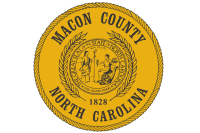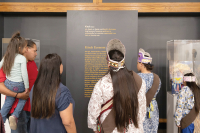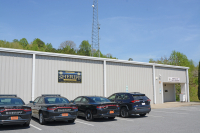Author’s bias shows through
What’s Liberal About The Liberal Arts? Classroom Politics and “Bias” in Higher Education by Michael Berube. W. W. Norton, 2006. 288 pages.
In What’s Liberal About The Liberal Arts? Classroom Politics and “Bias” in Higher Education (ISBN 978-0-393-06037-9, $26.95), Michael Berube, professor of literature at Pennsylvania State University, attempts a defense of political liberalism in the liberal arts programs of our country by taking us inside a college classroom — mostly, his own — and showing us that few professors actually bring any sort of political agenda into their teaching.
In the best part of this book, Berube succeeds in his defense of his own liberalism and fairness in the classroom by revealing to us how he himself deals with a variety of students and their beliefs. Penn State is an institution that includes students from every sort of background, and Berube effectively demonstrates how he as a liberal and a Democrat tries to avoid alienating any of his students in the classroom while at the same time challenging them to think and to analyze using literature as their tool. In the chapters titled “Race, Class, Gender” and “Postmodernism,” Berube skillfully depicts the inner workings of his classroom, his own teaching methods, and his students’ response to works ranging from The Great Gatsby to “Pulp Fiction.”
Berube is no doubt correct in his contention that many of his colleagues, perhaps a majority, approach literature, politics, free speech, and other issues with the same evenhandedness that he himself displays in his own classroom. Despite the fierce critiques from the right of biased teaching in America’s colleges and universities, most professors do not enjoy crushing students in the classroom, preaching rather than teaching, or repeating bosh rather than attempting to seek the truth. The interaction between student and teacher simply doesn’t work that way.
Once he steps outside of his classroom, however, and begins any sort of his own generalizations regarding liberalism and conservatism, Berube inadvertently transforms himself from a wise teacher to a foolish pundit. His ideas regarding conservatives and Christians — he seems to know few of either crowd, other than a few of his students — are a mess of clichés and misinformation. Here he writes from a base of his own biases: he reacts, for example, to the writings of David Horowitz, the sixties radical turned conservative gadfly, with some élan and force, but seems woefully ignorant of the ideas of other conservative writers.
Berube is sometimes unintentionally comedic in this blindness toward his own prejudices. He speaks numerous times, for example, of the possible dialogue between “liberals and thoughtful conservatives,” intending to postulate that only thoughtful conservatives can speak on the same level as liberals, yet failing to observe that his statement could be taken as a reversal to his intended meaning: that liberals are so dumb that only thought-filled conservatives can speak to them. He notes that in most universities liberals in the liberal arts are the vast majority, in some cases comprising over ninety percent of the faculty, but he states that this disparity is not the result of any bigotry in terms of hiring conservatives.
Related Items
It is instead the fault of conservatives themselves. Conservatives are either too stupid to enter the liberal arts — he offers as evidence a comment by Robert Brandon, chair of the philosophy department at Duke University, who “cheekily suggested that professors tend to be liberal because liberals tend to be smarter than conservatives” — or else they don’t really want to enter academia anyway, preferring instead to work for think tanks and legal foundations.
What’s Liberal About The Liberal Arts? was published about the same time that the Duke University rape case was dominating the headlines. This case provides an interesting counterpoint to Berube’s arguments. The liberal arts departments at Duke, particularly the English Department, are renowned (or notorious, depending on your point of view) for their left-wing approaches to their subject matter. So how did the liberal academics at Duke comport themselves when three of their lacrosse players were accused of rape? Did they abide by Berube’s standards of fair play? Not at all. Instead, many of them rushed to judgment before the trial, helping lead savage attacks on the accused students, supporting the dismissal of the coach and the cancelled lacrosse season, and issuing a statement against racism and sexism. Ironically, it took a chemistry professor, Steven Baldwin, to stand up and denounce his liberal arts colleagues in the Duke student newspaper, The Chronicle, for their prejudices and poor judgments.
Like certain conservative commentators, Berube simply seems blind to the arguments of those in opposing political camps. This inability to try and understand — not to stand in agreement, but simply to understand — a viewpoint opposed to our own seems endemic in our country today. We have become a nation of conflict, from talk shows to courtrooms, and our reactions sometimes seem Pavlovian in their ferocity: say the word “Bush” to some people, and it’s like watching a pit bull yanking at its leash. Ten years ago, conservatives had precisely the same reaction to the word “Clinton.”
What’s Liberal About The Liberal Arts? has many interesting points to make about teaching, about students, and about life in academia, but does little to help bridge the yawning gap between liberals and conservatives. If anything, with its snobbery and implied superiority, this book is, like so many other recent works from both the left and the right, simply one more brick in a wall of misunderstanding and mutual contempt.









